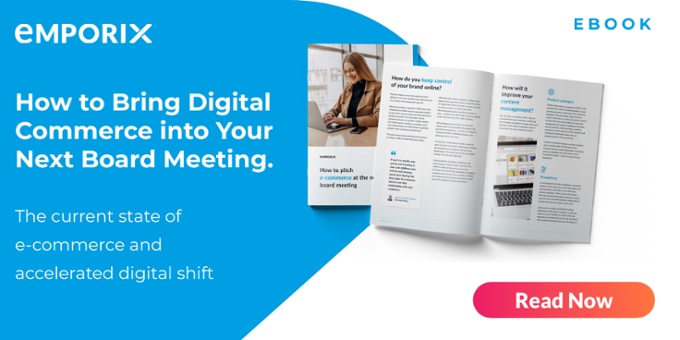How to choose an enterprise e-commerce solution for your business
As a business leader, what crosses your mind when you think of an e-commerce solution? If you think e-commerce is all about putting your goods and services online and allowing customers to pay for them via your website, you’re absolutely right - but that’s only a fraction of the overall picture. Granted, there was a time when e-commerce was little more than a storefront and a shopping cart, but those days are long gone. Today, even the smallest online retailers are expected to offer their goods and services through hyper-personalized, cross-channel experiences that put the customer front and center.
If terms like “API-first”, “headless commerce” or “composable IT” don’t already factor into your current thinking around e-commerce, your business is barely going to make a ripple in what is currently a very large pond, and you’re far less likely to gain a share of the market. This article will provide you with a brief insight into these technologies and how they can help you cater to rapidly changing customer expectations - both now, and in the future.
Delivering on the expectations of today’s customers
One of the main reasons e-commerce looks so different today than it did, say, ten years ago, isn’t because the act of selling and receiving goods has necessarily changed; it’s the experience that surrounds it. These days, your business can’t expect to simply list a product online and sell it. Whenever you invite prospective customers to engage, you’re now inviting them to partake in a brand experience that will determine whether or not they do business with you in the future. What’s more, this brand experience must be present and consistent across all channels of engagement, from websites and mobile apps to smart speakers and live chat.
Today’s e-commerce challenge isn’t just about maintaining a single website, it’s about maintaining a connected ecosystem that your customers can tap into whenever, and however, they choose. This means your business needs the ability to push out updates and roll out new features to these individual channels in a way that’s seamless, agile, and does not disrupt the all-important customer experience. That’s where microservices and headless commerce enter the picture to facilitate something we now think of as “composable” commerce.
What is a “composable” IT solution, and does your retail business need it?
If you’re a digital player in the world of retail, composable technology is all but mandatory if you’re going to go toe-to-toe with your competitors. By 2023, Gartner has predicted that if your business adopts a “composable” approach to e-commerce, it will most likely outpace competitors that don’t by a staggering 80% when it comes to rolling out new features. That gives “composable” retailers an incredible advantage when it comes to shaping the customer experience and catering to its needs.
To better understand composable IT, we first need to talk about decentralization and the adoption of an API-first approach. One of the things that makes online businesses so agile these days is their use of APIs to make disparate pieces of software interoperable. Instead of having everything run from one centralized, monolithic platform, microservices allow businesses to develop individual software functions that can be deployed, retracted and updated independently of one another. So instead of a monolithic platform governing everything you do, you can instead compose your own solution through a series of functions that can be orchestrated as an effective whole. This is what we mean when we refer to “composable” IT. In essence, it puts businesses in a position to seamlessly compose and orchestrate a range of independent solutions and functions using cloud-based APIs that offer greater control over data and processes.
Choosing your next enterprise e-commerce solution
When it comes to setting up and futureproofing your online retail business, composable technology is no longer optional - it’s essential. Perhaps if you’re selling a commodity or you’re able to differentiate yourself through a truly unique product offering, an out-of-the-box, monolithic solution might be good enough. But for the vast majority of retailers who are now competing in the digital space, composable IT is a necessary foundation for modern commerce. One of the main benefits of a composable solution is that, unlike legacy architectures, it’s capable of growing and evolving with your business. So as more touchpoints are added into the mix and consumer trends and expectations start to shift, you can shift with them.
The question then becomes, how do you choose a composable solution that’s right for your retail business? As IoT (Internet of Things) and automation continue to drive consumer behaviors and preferences, your retail business is going to need to approach mobile apps, responsive websites, smart speakers, as well as countless other channels and formats, in a decentralized, but joined-up, way.
Emporix understands this, and that’s why we’ve invested heavily in developing an enterprise-grade, fully composable digital commerce platform for both B2C and B2B businesses that allows you to seamlessly integrate new services with your existing IT infrastructure. With it, your business will have the flexibility to use and develop only the features and functions that are necessary to keep things moving, saving you both time and money as you plot your course forward.
To find out more about how Emporix can help your business set up for success with zero downtime, predictable costs and a platform that’s highly customizable and future-proofed, get in touch today.

